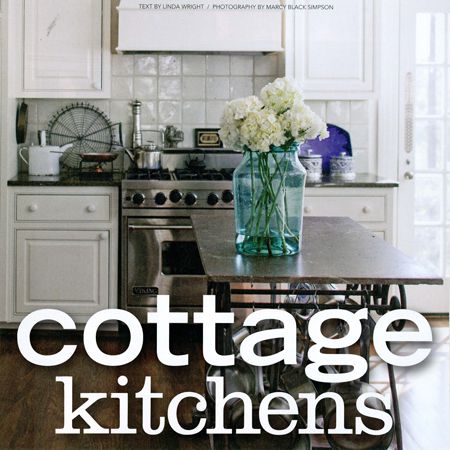Collector's Kitchen

Carole's interest was piqued by the antique candy molds she would see at markets and antiques shops, and she soon began searching them out. First used by candymakers in the 1800s, the molds were made from expensive copperplate. Less expensive tinplate molds came into fashion in the mid-1800s with designs by noted German mold maker Anton Reiche. The years of 1880 to 1930 are considered the glory days of chocolate candy molds, including Santa and other holiday shapes of all sorts, but the most popular shapes were thought to be Easter bunnies and rabbits.
Carole displays her collection of molds as artwork in her kitchen, over door frames, and alongside cabinets. In her mix, she has bunnies, of course, but she also has fork and spoon molds, small three-tiered cake molds, and even little Kewpie doll molds.
Hanging among her molds are pieces of blue and white china. Carole's creative style is evident as she seamlessly and elegantly threads blue accents and her diverse collection throughout the kitchen. Another example of her ingenuity is an iron base topped with stone used as a kitchen island workspace, but she doesn't stop there. She doubles the island's usefulness by using S-hooks to hank her collection of pots and pans.
With her love for collectibles and her unique sense of style, Carole makes this space a charming collector's kitchen.
Download the printable PDF of this article.


